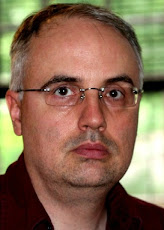Barham sets up two views, the Darwinian view, and the bioessentialist view. Guess which one he prefers?
The Darwinian View of Life
- There is no deep difference between living and nonliving matter; therefore, it is idle to seek “essential” properties or a “definition” of life.
- In any case, the most fundamental fact about a living thing is its ability to undergo natural selection.
The Bioessentialist View of Life
- There is a fundamental difference in kind between living and nonliving systems; the main task of biology is to understand the distinctive nature of living matter.
- The most fundamental fact about a living thing is its ability, by doing work selectively, to maintain itself in existence as the kind of physical system that it is.
Dismiss in passing Barham's purposeful confusion of Darwinism and materialism. Let's go to the videotape! Anyone remember the search for elan vital? It doesn't exist. Living things are made of the same atoms as non-living things. Use the same chemical reactions. Watch the same TV shows. Mr Barham seems to have forgotten that.
Oh, sorry, I didn't notice that the Darwinian was looking at 'matter' and the bioessentialist was looking at 'systems'. For a philosopher, Barham has a tough time setting up his comparisons.
"The main task of biology" - James Barham, armchair philosopher and web technician, has pronounced. It must be so.
"by doing work selectively," - selectively? A bacteria only eats half the available sugar? A virus only makes half the copies of itself that it could? Sperm cells only swim as much as they want? Barham might work selectively but it hardly qualifies as a definition of life.
(My own definition of life, FWIW: Life is a collection of molecules working together to avoid equilibrium for as long as possible.)
The essay is quite long and continues to be silly in the same vein. Genes are contrasted with proteins because metabolism is more important than reproduction. WTF? Since when was living forever an option? Metabolism explains the fossil record, biodiversity, the peacock's feathers and the panda's thumb?
Barham and his dog Marty are not, apparently, made of quarks descended from the Big Bang. Perhaps they were specially created 6,000 years ago. Who knew? Marty ain't made from no quarks! Reductionism is defeated.
For example, they are all explained at a more fundamental level by the Pauli exclusion principle.Except when it is convenient.
In the case of a true machine, the functional order has nothing whatever to do with the matter out of which the machine is composed. It is imposed upon the matter entirely from without—by us. The material parts out of which a machine is made are supremely indifferent to the purpose the whole is designed by us to serve. Moreover, the stability of a machine resides in the rigidity—not the flexibility, much less the inherent intelligence—of its parts.
In contrast to what happens inside a machine, everything that goes on within a living being possesses an inherent purpose—namely, maintaining the organism in existence. That is the essential difference between living and nonliving things.
So living things are NOT machines. Just don't tell Polanyi and all those folks that want to argue that living things ARE machines, because machines are designed.
Don't quit the web job, James. Armchair philosophy, it ain't for you.
